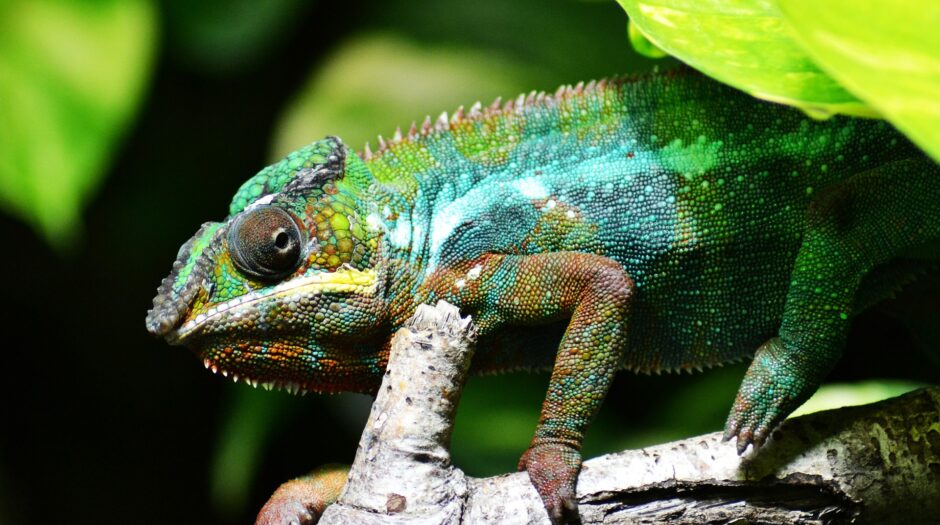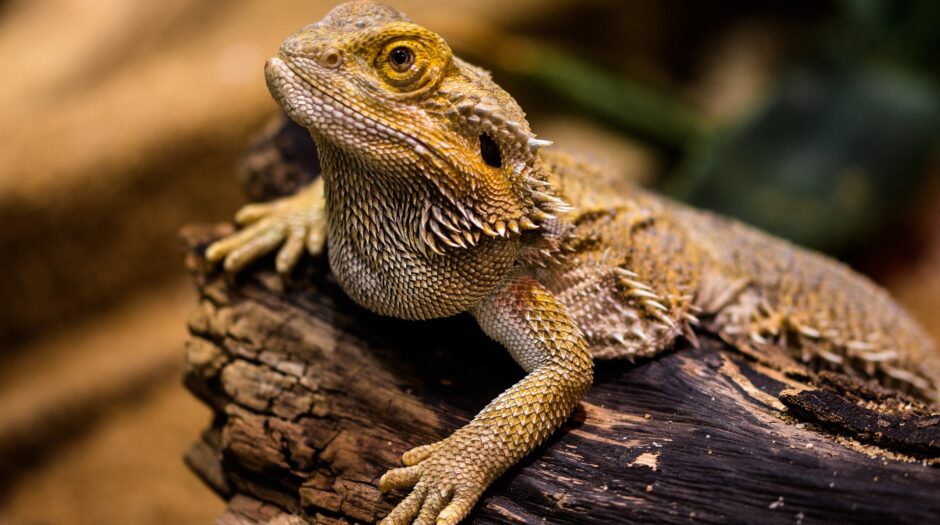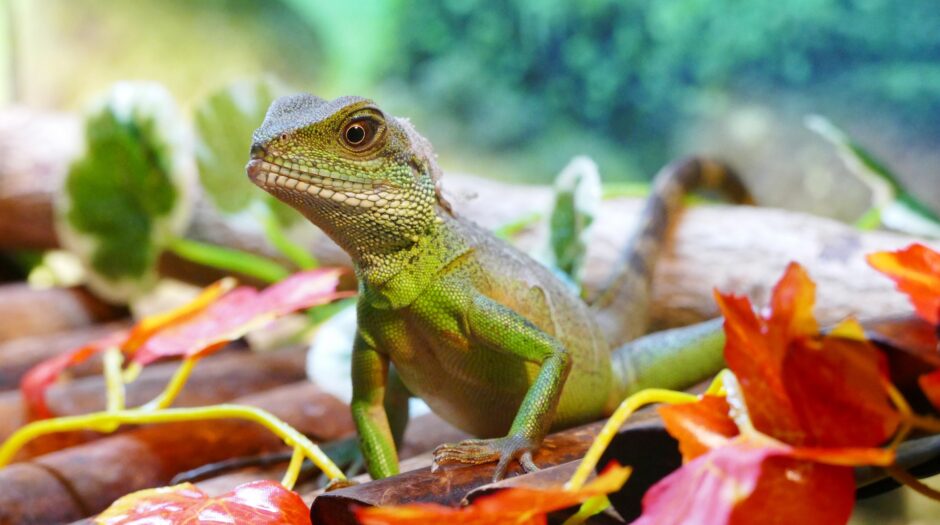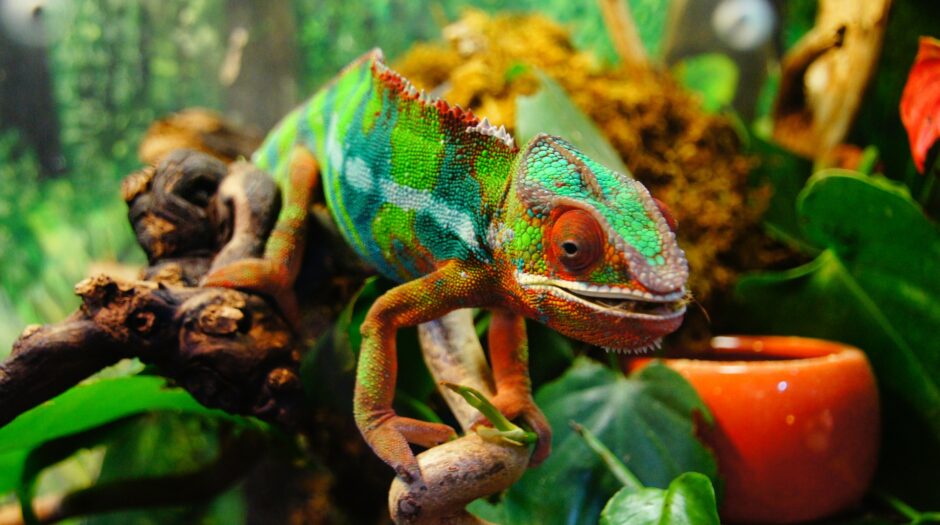Chameleons: The Real Reason for Colour-Change
Many people are aware of the chameleon’s colour-changing ability. But have you ever wondered why they change colour– and how they do it?
The Common Belief
The most common belief is that chameleons use their colour-changing ability for camouflage (Camouflage is when an animal disguises themselves into their surroundings to hide from predators). However, although this may be true in some cases, camouflage is only a secondary reason why most chameleons change colour.
Chameleons are actually pretty fast. Many of them can run up to 21 miles per hour and avoid most predators easily, so they don’t exactly need that camouflage.
Why Do They Change Colour?
Scientists believe that chameleons mostly use their ability to regulate their temperature and communicate to other chameleons.
Chameleons can’t produce their own body heat, so changing the colour of their skin is a way they use to maintain the right body temperature. If a chameleon is cold, they might change into a darker colour to absorb more heat and become a good temperature again, while a hot chameleon may turn a lighter colour to reflect the sun’s heat.

Chameleons can use their colour changing to communicate in different ways. Chameleons can actually communicate their mood and mate through their colours. Males tend to become a bright colour to show their dominance and become darker when aggressive. Owners might be able to determine their pets mood based on what colour their chameleon is.
Females will change their colour to let the male know if they are willing to mate through their skin. If she is unavailable, she will remain a dull greenish-brown. The male will change their colour to look attractive to the female, and commence their “ritual”, which contains more than just colour change. There have also been times where a male chameleon changes its colour to impersonate a female and avoid conflict if there is another male present.
Check out this video of a male chameleon colour changing for a female. (skip to 0:30-0:35 ish to see the change)
How Do Chameleons Change Colour?
Scientists believe that chameleons change colour by manipulating different pigments and structural colours. Their skin contains different colours of chromatophores/colour-bearing cells. These cells are organized in layers within the transparent skin.
The upper layer of skin contains brighter pigments (such as yellows and reds) and the lower layers contain darker pigments (such as black and brown). In between that, just below the brighter pigments is a layer called iridophores. These cells are iridescent and produce a structural colour. Iridophores, unlike the other chromatophores, don’t contain pigment. Instead, they contain an organized array of transparent, nano-sized crystals. These crystals reflect specific wavelengths of light, which is then distinguished as colour.
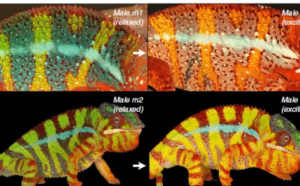
Image Credit= asknature.org
Normally those pigments will be stored away in little sacks within the cells. However, if a chameleon is experiencing a different mood, or wants to adjust its temperature, its nervous system will tell certain cells to either expand or contract, which releases some pigments and creates colour change.
By manipulating the different layers of cells, the chameleon can release multiple pigments, creating many different colours and patterns. These colours range from bright reds, yellows, and pinks, to neutral greens, blues, and browns.
So there you have it!
Want more?
If you’re interested in more info about chameleons, check out our article called 10 Chameleon Enclosure Decorating Ideas to learn more about these fascinating, exotic pets!

